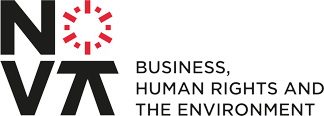This blog post is based on the interventions of Cristina Almeida in the webinar on Corporate Due Diligence and Capital Markets organised as part of the First Annual Conference of the Nova Centre on Business, Human Rights and the Environment with the support of PLMJ, the Portuguese Chamber of Commerce and Industry, CEDIS, as well as NOVA 4 The Globe on the 25th of November 2021.
About the author: Cristina Almeida is the Head of Platform at MAZE, an impact investing company based in Lisbon that accelerates and invests in solutions solving for the greatest social and environmental challenges of our time.
Cristina, can you tell us a bit more about MAZE and the work that you are doing?
MAZE is an impact investing company founded in 2013 by the Calouste Gulbenkian Foundation with three areas of work. Today I will talk about our impact venture capital fund where we invest in startups that profit while solving social and environmental challenges. We also accelerate impact start-ups and we work with the with the public sector to design innovative ways to deliver better social outcomes, which is actually the area where we started. We are an impact organisation turned into an impact investor if that is fair to say and I manage the platform of our VC fund which is responsible for all the non-financial support that we provide to our startups.
What would you say are the principal differences between the role of asset managers and VCs in their capacity as stewards for their investees?
I think the main difference with venture capital is that we invest in early-stage start-ups. It defers in the level and the type of risk that is involved. We follow a power law in terms of returns which means that, on average, nine of each ten investments we make will fail and only one of them will generate the venture returns for the fund. Asset managers on the other hand can control the level of risk by bundling multiple investments.
Another difference is the proximity to the investment. We look after the ventures we invest in. Asset managers look after their clients wealth. We often sit in the board of these companies so we get to influence the outcomes of the business and impact outcomes that this companies deliver, whereas maybe asset managers just wait for the market to deliver what it would deliver anyway. We get to have this proximity to investees.
A third difference is and the available information at the moment of investment. At the stage that we invest in companies, we invest in ideas, which means we invest in entrepreneurs ability to deliver a solution that will change the market as we know it, the likes of Google or Facebook but with positive social and environmental outcomes. Therefore, the available information is much different from established companies. This means that we have to make decisions about social and environmental outcomes with very little information and we have to focus on the people that are delivering this mission and their ability to stay true to what they want to do with the start-up that they are creating.
Finally, our impact mandate determines our due diligence and communication processes. We have to be very transparent in terms of what we do. This impacts how the companies report to us and then how we report to our LPs so all of our working processes have impact embedded to make sure that we stay true to our mission.
Purpose-driven companies require different criteria implemented into the traditional valuation of the companies – the value of the company here does not only depend on the financial performance models, but also on the fulfilment of social goals. Could you please explain how this is done in practice – how the positive impact is measured?
We invest in lock-step ventures, where there is a mutually reinforcing dynamic between profit and impact, when solving for social and environmental challenges. This means that our investment thesis lies on the core belief that the businesses of the future are those that profit while solving social and environmental challenges. The corollary of our thesis is then that the expected value of companies that have the potential for positive social and environmental outcomes is higher than the ones that aggravate social and environmental challenges.
An impact mindset and discipline enhance commercial outcomes, product development, access to capital, talent attraction and every other single element of a business. In practice, we use the Impact Management Project framework and follow the United Nations Sustainable Development Goals for communication purposes.
I would explain our impact approach in 4 angles: due diligence, incentive structure, reporting and transparency.
Due dilligence
1.Our due diligence process when screening our ventures includes an IMP analysis where we five dimensions
– What tells us what outcome the enterprise is contributing to, whether it is positive or negative, and how important the outcome is to stakeholders.
– Who tells us which stakeholders are experiencing the outcome and how underserved they are in relation to the outcome.
– How Much tells us how many stakeholders experienced the outcome, what degree of change they experienced, and how long they experienced the outcome for.
– Contribution tells us whether an enterprise’s and/or investor’s efforts resulted in outcomes that were likely better than what would have occurred otherwise.
– Risk tells us the likelihood that impact will be different than expected.
2.Then, as a result of the DD, we identify one or two metrics that translate both the success of a business and the fulfilment of a social and/or environmental outcome. Let’s take one of our investments as an example. Student Finance is a platform that scrapes real-time job market data and partners with education providers to finance educational outcomes through Income Share Agreements (ISAs). An income-share agreement is a contract through which a student receives upfront money for education in exchange for a fixed percentage of their future income. The metrics we chose translate both the success of the solution as well the intended social outcome of Student Finance:
– Number of job placements
– Increase in income
3.After agreeing with the venture on the impact metrics to be monitored, we define 4 year goals tied to their expected growth.
4.Finally, based on this assessment, we rate each investment from A to C. For more information on this, read our yearly impact report.
Incentive structure
We were the first impact fund to design an incentive structure to keep our money where our mouth is. As an impact fund, our carry as fund managers is tied to the impact performance of our portfolio companies. This means we put our money where our mouth is. In essence, we are only entitled to our performance fee, if, and only if, we reach a minimum threshold of impact performance across the impact metrics of our portfolio. This is something we are very proud of. You can learn how we design it here.
Reporting
Given the previous point we are materially incentivized to make sure our ventures continue delivering the impact they committed to. This means that every quarter they report on their impact performance, and we report to our limited partners accordingly.
Every semester we also report our impact performance to our advisory board who keep us on our toes and act as our critical friend. These are the Calouste Gulbenkian Foundation, AGEAS Portugal and BMW.
Transparency
Finally, we produce impact factsheets for each investment we make that are publicly available on msm.vc where you can read our IMP and SDG analysis.
We are a certified BCorp, a third-party assessment which verifies their impact in 5 dimensions: Governance, Workers, Community, Clients, and the Environment. If a minimum score is reached, you can officially become a B Corp and join the community. Today, there +4,000 B Corp companies from 77 different countries around the world, which consider their business as a force for good with the numbers growing every year. Some of the most notable companies that have received the B Corp certificate include Danone, Patagonia and Ben & Jerry’s. We also produce a yearly impact report where we reflect on where we came from and where we want to go.
Suggested citation: C. Almeida, ‘Venture Capital versus Asset Managers and the road to social and environmental outcomes’, Nova Centre on Business, Human Rights and the Environment Blog, 4th February 2022.

